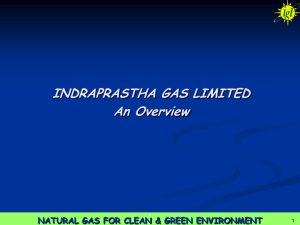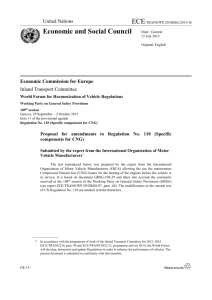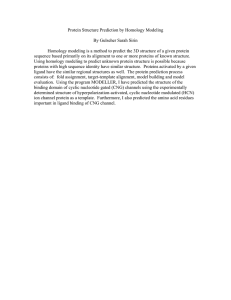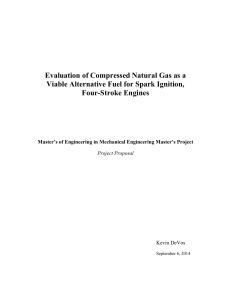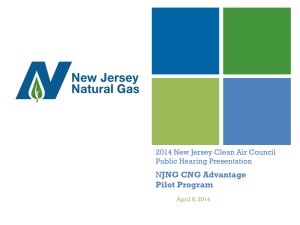CHAPTER 1 INTRODUCTION
advertisement
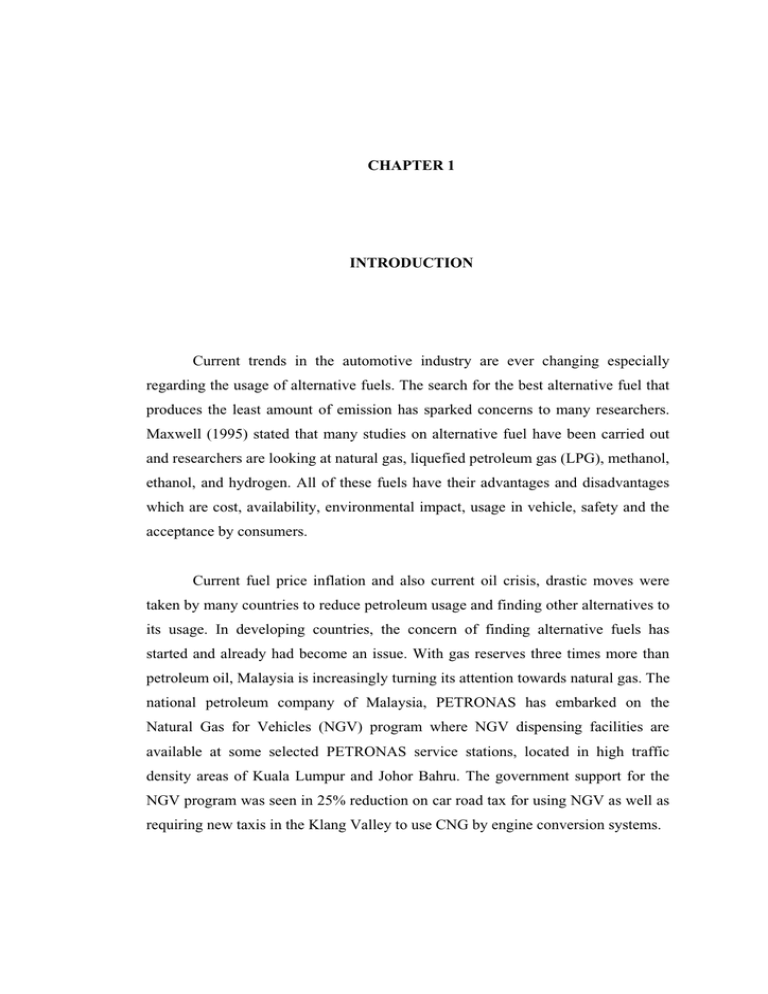
CHAPTER 1 INTRODUCTION Current trends in the automotive industry are ever changing especially regarding the usage of alternative fuels. The search for the best alternative fuel that produces the least amount of emission has sparked concerns to many researchers. Maxwell (1995) stated that many studies on alternative fuel have been carried out and researchers are looking at natural gas, liquefied petroleum gas (LPG), methanol, ethanol, and hydrogen. All of these fuels have their advantages and disadvantages which are cost, availability, environmental impact, usage in vehicle, safety and the acceptance by consumers. Current fuel price inflation and also current oil crisis, drastic moves were taken by many countries to reduce petroleum usage and finding other alternatives to its usage. In developing countries, the concern of finding alternative fuels has started and already had become an issue. With gas reserves three times more than petroleum oil, Malaysia is increasingly turning its attention towards natural gas. The national petroleum company of Malaysia, PETRONAS has embarked on the Natural Gas for Vehicles (NGV) program where NGV dispensing facilities are available at some selected PETRONAS service stations, located in high traffic density areas of Kuala Lumpur and Johor Bahru. The government support for the NGV program was seen in 25% reduction on car road tax for using NGV as well as requiring new taxis in the Klang Valley to use CNG by engine conversion systems. 2 In automotive applications, natural gas can be used in three forms based on how the natural gas is stored. One of the most popular forms of natural gas is the compressed natural gas (CNG), which is natural gas in pressurised form. The other least popular methods of obtaining natural are liquefied natural gas and the absorption natural gas. CNG is a good alternative to petrol and diesel. Consumers would easily accept this form of alternative as it has low operational cost due to subsidised price and its usage could provide cleaner engine emissions. The main reason behind CNG fuel being cleaner is that natural gas is principally comprise of 90% methane, which is the simplest form of hydrocarbon. Even so, the CNG fuel available today still lack in some qualities compared to petroleum fuel. For example, CNG fuelled engines normally possess lower engine performance compared to petrol. The main reason is that CNG fuelling systems creates a lot of losses in terms of volumetric efficiency. This happens as CNG must be supplied to the engine through a mixing device before the mixture of CNG and air is drawn into the engine. This causes less fuel in the combustion chamber and reduces volumetric efficiency. Currently petrol fuelled engine are converted into a CNG fuelled engine by means of a fuel mixing device. 1.1 Problem Statement Currently, there are no specific CNG mixers specifically designed for two stroke engines in the market. All of the conversion kits that are available for four stroke engines only. A proper CNG mixer should be designed for two stroke engine application. A supercharged 150 cc two stroke engine has been chosen for CNG conversion. Direct usage of a conventional four stroke engine CNG mixer for two stroke engines is not possible as they are too large a size for a small two stroke engine air requirements. The design of the mixer has to consider the whole range of engine operating condition in order to provide a complete view of its performance. 3 The existing four stroke engine CNG mixers are usually not properly refined and optimised to enable good air fuel mixing. In addition, the efficiency of the current mixer design is also an issue as it is designed for simplicity which only offers practicality but lack in efficient air flow performance throughout the engine speed. Therefore, a straight forward conversion is not possible. 1.2 Objectives The objectives of the study are as follows: 1) To design a venturi burner type CNG mixer for a two stroke engine according to the engine’s air requirement using CFD. 2) To fabricate the optimised prototype of the CNG mixer and test it on a flow bench machine. 1.3 Scope The scopes of the research are as follows: 1) Preliminary design of the CNG mixer. 2) Optimising the CNG mixer design using CFD as a design tool . 3) Fabrication of the prototype CNG mixer. 4) Testing and validation of the CNG mixer design. 1.4 Methodology A general methodology was followed in the research as indicated in the flow chart as shown in Figure 1.1: 4 Start Literature review Concept design Designing of mixer Meet design criteria Yes Prototyping the mixer Validating the mixer design End Figure 1.1 Methodology No


